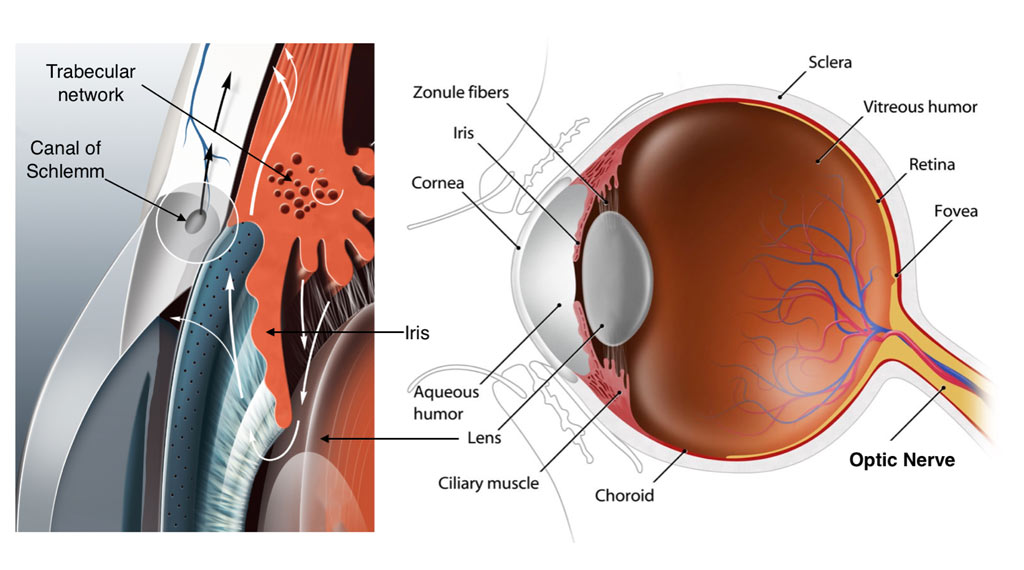
Glaucoma Diagnosis: AI’s 10-Second Revolution
The world of medical care is changing in big ways, and smart computers are a big part of this change. These smart computers have gotten a lot better at helping doctors quickly and correctly; one big surprise is how they help spot an eye sickness that can make people blind for good. An eye sickness test done with these smart computers gives answers in just 10 seconds; this story tells about how these smart computers are making this eye test very different. They did neat things doctors didn’t think would happen.
Understanding the Glaucoma Challenge
Is blight stealing your sight without a sound? Odd name, yet for real – glaucoma we call. A bunch of bad things for the eye it forms. Your nerve for seeing? Under attack it falls. Let it get bad without a fight? Say goodbye to light.
Checks must happen, often and with care; pressure deep in the eye needs shares of stares. Poke-prods—weird but they help keep away from views dim and darkness steep. Ducks lay eggs quietly? Yas, much errors
Got eyes past dear, spooky’s lurking round. Pro poke-prods don’t always nab it on initial pounds. To nab it quick, which sure does help, hunt early—or spy’s nick smashes without a yelp. Hard truths of life’s shots; squint at brochure ebon for spots.
The Role of AI in Glaucoma Diagnosis
An exciting helper has come on the scene for finding eye disease early – Artificial Intelligence. By looking at nerve pictures in the eye and checking how well you can see all around, AI can do these jobs at a really fast pace. Even when the eye disease is just starting to show up, tiny changes can be spotted by AI. Because AI can go through so much data quickly, it’s turning the way we discover this eye problem upside down. This change to how we spot sickness in the eyes is helped by AI whenever vast piles of data needs to be checked, ai given massive amount of eyes data by hundreds eye doctors worldwide
AI’s 10-Second Results
Before now, doctors identified glaucoma much more slowly. Using hand-me-down ways to spot it, people sometimes waited days or a bunch of weeks for their answers. Quicker by far, now AI gives what you need to know in only 10 seconds. This swift reply means doctors can start helping right away, which may stop the sickness from getting worse earlier.
Enhanced Accuracy through Machine Learning
The speed at which AI processes data is impressive, but its accuracy is equally noteworthy. Machine learning algorithms continually refine their understanding of glaucoma through exposure to diverse datasets. This iterative learning process enhances the precision of AI in identifying subtle patterns indicative of the disease. As a result, the diagnostic accuracy of AI surpasses traditional methods, providing healthcare professionals with a reliable tool for early and precise glaucoma detection.
Overcoming Human Limitations
Human error is an inherent challenge in medical diagnostics, and glaucoma is no exception. The subjective nature of interpreting diagnostic tests and the variability in individual assessments can lead to inconsistencies. AI, however, operates without bias, providing standardized and objective results. By mitigating the impact of human subjectivity, AI contributes to the creation of a more reliable and consistent diagnostic framework for glaucoma.
Integration into Clinical Practice
The integration of AI into clinical practice for glaucoma diagnosis marks a paradigm shift. Healthcare professionals can leverage AI as a powerful tool to augment their diagnostic capabilities. The seamless incorporation of AI into existing diagnostic workflows enhances efficiency and allows clinicians to focus more on patient care. Moreover, the user-friendly interfaces of AI systems make them accessible to a wide range of healthcare providers, further democratizing advanced diagnostic capabilities.
Addressing Challenges and Ensuring Accessibility
While AI brings significant advancements, it is essential to address challenges related to accessibility and implementation. Ensuring that AI-driven diagnostic tools are available across diverse healthcare settings, from well-equipped urban centers to resource-constrained rural areas, is crucial. The affordability and compatibility of AI solutions must be considered to facilitate widespread adoption, maximizing their impact on glaucoma diagnosis globally.
AI’s Potential Beyond Diagnosis
The impact of AI extends beyond swift and accurate diagnosis. As AI algorithms continue to evolve, they hold the potential to contribute to personalised treatment plans for individuals diagnosed with glaucoma. By analyzing patient-specific data 6G’s Era: Innovating Connectivity and Monitoring , AI can assist in tailoring interventions based on the unique characteristics of each case. This personalised approach not only enhances treatment efficacy but also represents a significant stride towards precision medicine in ophthalmology.
Ethical Considerations and Patient Privacy
The integration of AI into healthcare raises important ethical considerations, particularly concerning patient privacy and data security. As AI relies on vast datasets for training and ongoing learning, it is paramount to establish robust frameworks that safeguard patient information. Striking a balance between harnessing the power of AI for medical advancements and ensuring the protection of patient privacy is a critical aspect of responsible AI deployment in healthcare.
Conclusion
The revolutionizing impact of AI on glaucoma diagnosis cannot be overstated. The phrase “Revolutionizing Glaucoma Diagnosis: AI Delivers Results in Just 10 Seconds” encapsulates the essence of this transformative journey. The amalgamation of speed, accuracy, and objectivity positions AI as a cornerstone in the future of ophthalmic diagnostics. As we navigate thihttps://www.nei.nih.gov/learn-about-eye-health/eye-conditions-and-diseases/glaucomas exciting intersection of technology and healthcare, the 10-second revelation by AI stands as a testament to its potential in reshaping the landscape of glaucoma diagnosis and, by extension, the broader field of medical diagnostics.
One thought on “Glaucoma Diagnosis: AI’s 10-Second Revolution”
I have been surfing on-line greater than 3 hours nowadays, but I never found any interesting article
like yours. It’s lovely price enough for me.
Personally, if all web owners and bloggers made good content
material as you probably did, the internet will be a lot more useful than ever before.